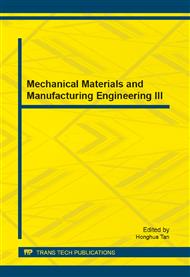p.544
p.551
p.557
p.561
p.568
p.574
p.580
p.585
p.593
Experimental Research in Wind Tunnel of Aerodynamic Characters for New-Type Energy-Saving Conductor
Abstract:
New-typedenergy-saving conductor can obviously increase conductor conductivity ability, and reduce the transmission losses. But for the changes of structure and surface properties, its load and the vibration impact characteristic are not enough comprehensive, so it is difficult to effectively guide the energy saving design of the conductor. Making use of the wind tunnel test, the aerodynamic character of various conductorsare obtained for single,double, four and six bundle conductor. The result of research is benefit for the far-ranging application of energy-saving conductor.
Info:
Periodical:
Pages:
568-573
Citation:
Online since:
November 2013
Authors:
Price:
Сopyright:
© 2014 Trans Tech Publications Ltd. All Rights Reserved
Share:
Citation:


